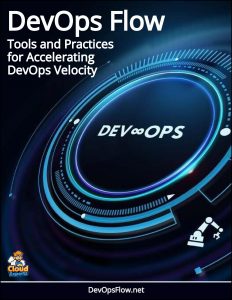DevOps Flow – Accelerating Developer Velocity Through Software Factory Best Practices
DevOps Flow is a methodology for implementing high performance, Cloud-centric software development, based on a science developed by pioneers like Toyoto to optimize factory lines and apply this to software engineering.

 Two McKinsey articles are ideally combined when considering the challenge of growing the speed and success of your IT & DevOps teams.
Two McKinsey articles are ideally combined when considering the challenge of growing the speed and success of your IT & DevOps teams.
In ‘Welcome to the Digital Factory‘ McKinsey review the new organizational models being employed by disruptive digital leaders – The ‘Digital Factory’.
Complimenting this is ‘How software excellence fuels business performance‘, where they explain how a headline metric of ‘Developer Velocity’ can ensure digital investments.
The two are an ideal combination as a Digital Factory approach identifies new ways of working that tap insights from the world of manufacturing, applying a production line metaphor for software workflow management, that can be monitored and managed through KPI metrics under a headline of ‘Developer Velocity‘, so that output can be improved via the same type of process improvement regimes.
As they observe in companies like Goldman Sachs, software engineers now make up 1/4 of the total workforce. In addition to mastering the nuances of their industry, businesses today need to excel first and foremost at developing software, and their articles form a helpful implementation model for getting started.
Digital Factories
Transformation leaders are turning to a ‘Digital Factory‘ approach to streamline this complexity into a production line model that yields consistently high throughput and quality, using Lean principles derived from the world of manufacturing.
In their in-depth article, McKinsey explores the dynamics and successes of the Digital Factory model, a new approach to organising digital teams, a self-organising structure vs rigid departmental hierarchies, and they describe the KPI improvements the Digital Factory enables:
“A Digital Factory is the “construction site” where change happens. It comprises dedicated, cross-functional teams that work together on change-the-business programs. They resemble factory workers in that they employ reusable tools and repeatable processes to build specific “products” in the form of new experiences, services, or solutions. The secret to the Digital Factory’s success is that its small teams, working closely with the business side, function as a start-up accelerator.”
“We see reductions in management overhead of 50 percent for technology teams in the DF, 70 percent in the number of business analysts needed to write technology requirements, and, as test automation becomes the norm, a drop of 90 percent in the number of testers. Finally, we see top engineering talent performing at eight times the level of their peers, as measured with metrics such as code commits.”
Through the story of a visit to the Digital Factory of a Telecomms business, McKinsey introduce and explain an approach to IT organization that has yielded benefits including:
- bring products to market faster (in six months versus two years)
- do more with existing resources (eight product launches per year versus one or two)
- create dramatically reimagined experiences (opening an account in five minutes versus ten days)
- reduce tech development costs by a third (fewer managers per engineer)
- attract the great talent required to compete in a digital world
Given a context that only 16% of executives rate their digital transformation projects as successful, this recipe for a better way to improve IT delivery overall is therefore very appealing. Especially as they describe how it can be treated as a ‘sidebar’ unit, a new innovation-centric digital team that doesn’t disturb and ‘bolts on’ to the existing legacy business, or as a complete new broom, wholesale transformation.
‘Software Factories‘ are described as such because the underlying management science is literally derived from the world of manufacturing, utilizing practices such as Lean and Six Sigma, pioneered by organizations like Toyota.

Ultimately the important success factor is building them around key strategic goals – For example reducing mortgage loan rate application turnarounds from three weeks to minutes. These kind of major leaps in the market deliver real strategic advantage.
Digital Factories mainly address the large scale enterprise complexity required to achieve those kinds of improvements, notably breaking down into self-managing, autonomous teams. These ‘Agile Squads’ are typically 10-15 people in size and bring together business and IT stakeholders to action, and validate, ideas much more quickly.
They are guided by a central Centre of Excellence, which acts as the ‘control tower’ and provides for central functions notably skills and tools assets and services, such as:
“One of the most important roles in the nerve center is the lead product owner. This person is not a manager but a “doer-in-chief,” who works with the local product owner to ensure quality of execution, provide weekly coaching, pressure-test business cases, and review team progress with the goal of understanding bottlenecks and helping to break them. The lead product owner is particularly involved during the first month that the squad is in place and ideally acts as its mentor.”
If done right, the Digital Factory is a powerful engine to enable and accelerate not only the business but also the IT transformation agenda. That’s because the missions that Digital Factory teams work on have sufficient scale and clarity of focus for IT to develop next-generation capabilities such as automated testing, cloud-based applications, secure coding practices, and application programming interfaces (APIs) that can be put to immediate and practical use.



